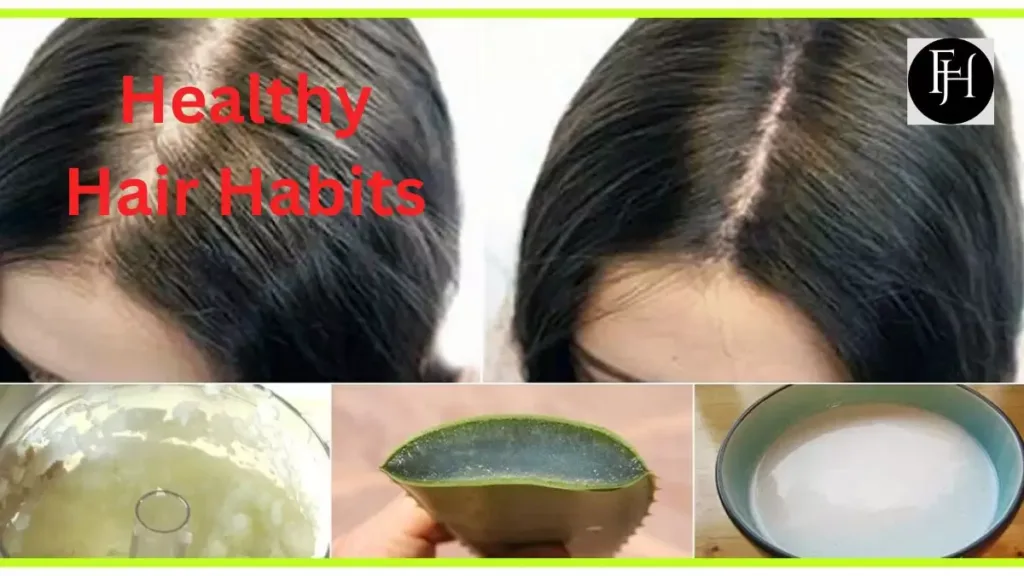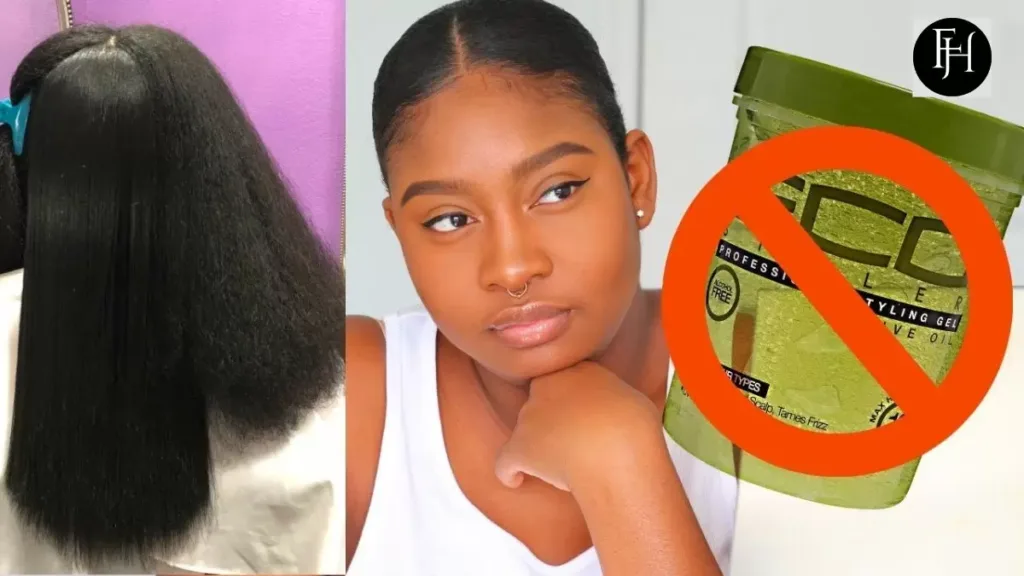Styling gel is a hair product used to hold hair in place. It contains chemicals that may cause damage to hair over time. Excessive use of styling gel can lead to dryness and breakage. It is important to use it sparingly and choose products with fewer harsh chemicals.
Before you reach for that trusty tub of gel, consider this: the answer might surprise you. Is styling gel bad for your hair? Dive into the science behind gel and discover the truth about its effects on your hair health. From its ingredients to its long-term impact, uncover the facts you need to know to keep your locks looking their best.
Styling gel can provide temporary hold and shape, frequent use may lead to issues such as dryness and breakage. It is essential to choose gels with fewer harsh chemicals and to use them sparingly to minimize potential damage. Consulting with a hairstylist can also offer insights into healthier styling alternatives.
Understanding the Impact of Styling Gel on Hair Health
To grasp the impact of styling gel on hair health, it is vital to recognize its active ingredients. Many gels contain chemicals that can strip hair of its natural oils, leading to dryness and breakage. Regular use without proper care can exacerbate these issues, affecting the overall health and appearance of your hair.
Understanding how gel interacts with different hair types is crucial. While some individuals may experience minimal damage, others with finer or more delicate hair may notice more significant effects. By being mindful of ingredients and usage frequency, you can make informed choices to maintain healthier hair despite using styling gel.
Is Styling Gel Really Bad for Your Hair?
styling gel can provide temporary hold and shape, some formulations may contain chemicals that could potentially lead to dryness and breakage over time. It is crucial to be mindful of the products you use and their impact on your hair health. To ensure your hair stays healthy while using styling gel, consider opting for products with fewer harsh chemicals.
Using styling gel sparingly and incorporating regular deep conditioning treatments can help mitigate any potential damage. By making informed choices and practising good hair care habits, you can enjoy your favourite styles without compromising the health of your hair.
Styling Gel Damaging Your Hair?
Many believe so due to its chemical content. Styling gel can lead to dryness and breakage with frequent use. To prevent damage, opt for gels with fewer harsh chemicals and use them sparingly.
| Concerns | Effects on Hair |
| Dryness | Can strip hair of moisture, leading to dryness. |
| Breakage | Harsh chemicals in gel can weaken hair strands. |
| Scalp Irritation | Some gels may cause irritation or itching. |
| Product Buildup | Overuse can lead to residue buildup on the scalp. |
This table highlights common concerns associated with using gel and their potential effects on hair health.
Delving Deeper: The Science Behind Styling Gel and Hair Damage
Dive into the science behind styling gel and its effects on hair. This gel contains chemicals that can potentially damage hair with frequent use. These chemicals may lead to dryness, breakage, and other issues, impacting hair health over time.
Understanding the composition of styling gel can help users make informed choices to protect their hair. It is essential to be mindful of the ingredients in styling products and their potential impact on hair health. Taking proactive steps to minimise damage can help maintain strong, healthy hair despite regular styling.
The Hidden Dangers of Overusing Styling Gel on Your Hair
Overusing styling gel can harm your hair more than you think. It contains chemicals that may cause dryness and breakage, especially with frequent application. To avoid these dangers, use styling gel sparingly and opt for products with fewer harsh chemicals. Consider incorporating regular hair treatments and deep conditioning to maintain hair health.
Excessive use of styling gel can lead to unwanted consequences for your hair. These dangers include dryness, brittleness, and even potential damage to your scalp. To keep your locks looking their best, limit your use of gel and priorities nourishing hair care routines to promote overall hair health and vitality.
Tips for Safely Using Styling Gel
When using styling gel, apply a small amount onto your palms and evenly distribute it through damp or dry hair. Avoid applying gel directly to the scalp to prevent buildup and potential irritation. opt for gels with natural or nourishing ingredients to minimize potential damage to your hair.
1. Choose Quality Products: Opt for styling gels with natural ingredients and fewer harsh chemicals to minimise potential damage to your hair and scalp.
2. Use Sparingly: Apply a small amount of gel to avoid buildup and prevent weighing down your hair.
3. Priorities Hair Health: Incorporate regular deep conditioning treatments to nourish and replenish moisture lost from gel use.
4. Avoid Heat Overload: Limit the use of heat styling tools when using gel to prevent excessive drying and potential damage to your hair.
5. Cleanse Properly: Use a gentle shampoo to thoroughly remove styling gel residue from your hair and scalp, preventing product buildup and irritation.
The Impact of Styling Gel on Hair Texture
Styling gel can significantly affect hair texture. It works by coating the strands, giving them a sleek or stiff appearance. Over time, frequent use of styling gel can lead to a buildup of residue, causing hair to feel weighed down and look dull. Some gels contain alcohol, which can dry out the hair, leading to a rougher texture and increased frizz. Therefore, it is important to use styling gel sparingly and opt for formulations that are alcohol-free to maintain smoother, healthier-looking hair.
The impact of styling gel on hair texture varies depending on individual hair types. Fine hair may become limp and flat with excessive gel use, while thick or curly hair may experience increased stiffness and a loss of natural bounce. Understanding your hair’s unique needs and choosing styling products accordingly can help mitigate any negative effects on texture, allowing you to achieve the desired style without compromising the health and appearance of your hair.
Styling Gel SOS: How to Spot and Avoid Harmful Ingredients
In the world of haircare, it is essential to be savvy about the products we use. When it comes to styling gel, knowing how to identify and steer clear of harmful ingredients is key. Look for labels that list natural, nourishing components like plant extracts and vitamins, while avoiding harsh chemicals like sulphates and parabens.
Keep an eye out for telltale signs like strong chemical smells or overly drying effects after use. Choosing gel formulas that prioritise hair health can help you achieve your desired style without compromising the well-being of your locks.
The Lowdown on Styling Gel: Risks and Benefits for Your Hair
When it comes to styling gel, understanding its impact on your hair is essential. This product offers benefits like hold and control, but it also carries risks. Excessive use of styling gel can lead to dryness and breakage, so it is important to use it sparingly and opt for formulas with fewer harsh chemicals.
On the flip side, styling gel can be a handy tool for achieving desired hairstyles. It provides versatility and allows for creative expression with your hair. However, being mindful of how much you use and choosing quality products can help you reap the benefits without sacrificing the health of your hair.
Healthy Hair Habits: Minimizing Damage from Styling Gel Use

To maintain healthy hair while using styling gel, it’s crucial to adopt smart habits. Firstly, opt for gels with fewer harsh chemicals to minimize potential damage. Use styling gel sparingly, focusing on applying it only where needed to avoid overloading your hair. When styling short hair with a blow dryer, ensure you use a heat protectant to shield your strands from high temperatures and maintain your hair’s health.
Regularly washing out styling gel is essential to prevent product buildup, which can weigh down your hair and lead to breakage. Lastly, consider incorporating deep conditioning treatments into your haircare routine to nourish and strengthen your strands, counteracting any potential damage caused by styling gel use. By following these simple steps, you can enjoy styled hair without compromising its health.
How to Use Gel Responsibly for Healthy Hair
To maintain healthy hair while using gel, start with clean, damp hair. Take a small amount of gel and rub it between your palms, then evenly distribute it through your hair, focusing on the roots and ends. Use your fingers or a comb to style your hair as desired, avoiding excessive pulling or tugging. To wash the gel out thoroughly at the end of the day to prevent buildup and potential damage to your hair.
Opt for gel products that are free from harsh chemicals and alcohol, as these can strip the hair of its natural oils and cause dryness. Limit your use of gel to only when necessary, and consider incorporating deep conditioning treatments into your hair care routine to keep your locks healthy and hydrated. By following these simple steps, you can enjoy the benefits of styling gel without compromising the health of your hair.
What Hairstylists Say About Styling Gel and Hair Health
When it comes to styling gel and hair health, hair stylists offer valuable insights. They emphasize the importance of choosing quality products with fewer harsh chemicals. Hair Stylists recommend using gel sparingly to avoid potential damage and suggest incorporating regular deep conditioning treatments to maintain hair health.
Hairstylists advise against relying solely on styling gel for long-term hold. They encourage exploring alternative styling methods, such as mousse or leave-in conditioners, to minimise potential damage. Overall, listening to hairstylists’ advice can help you make informed decisions about your hair care routine and keep your locks looking their best.
FAQs
Can I put gel in wet hair?
Yes, you can put gel in wet hair. Applying gel to wet hair can help distribute the product evenly and achieve a sleeker, more controlled style.
What are the disadvantages of styling gel?
Disadvantages of styling gel may include potential dryness and breakage due to the chemicals it contains, as well as product buildup if not properly washed out.
What are the benefits of styling gel?
Benefits of styling gel include providing hold and control for various hairstyles, adding volume and texture, and offering versatility for styling options.
Which is more harmful hair wax or gel?
Hair wax and gel can both be damaging if used excessively, but wax tends to be heavier and can weigh down hair more than gel, potentially leading to more buildup.
Is curl cream or gel better?
The choice between curl cream and gel depends on personal preference and hair type. Curl cream is often preferred for softer, more natural-looking curls, while gel provides stronger hold and definition for more structured styles.
Conclusion
Styling gel prompts important considerations for hair care routines. Is styling gel bad for your hair? While this gel can offer temporary hold and shape, it is essential to be mindful of its potential impact on hair health. By choosing products with fewer harsh chemicals and using them sparingly, individuals can minimise the risk of damage associated with styling gel.
Maintaining healthy hair involves a balanced approach to styling and care. By staying informed about the effects of gel and incorporating alternative styling methods when possible, individuals can keep their hair looking great without compromising its health. While this gel can be a useful tool in your beauty arsenal, it is crucial to use it wisely to ensure the long-term health and vitality of your hair.


Pingback: How to style hair extensions?